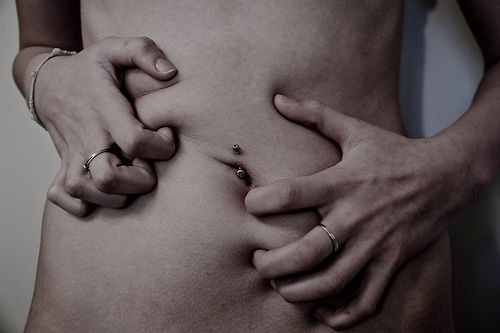Obese Teens Who Lose Weight Are Prone To Eating Disorders: The Hidden Hazards Of Adolescent Dieting

A new report from the Mayo Clinic outlines an acute danger that obese teens may face after losing weight. Eating disorders can surface after teenagers succeed with cutting some pounds, and the renowned medical outfit presents two unique cases — one boy and one girl — that highlight the specific challenges that arise with recognizing these conditions in formerly obese children.
It’s hard to turn on the news in the U.S. without hearing a story about the childhood obesity epidemic. Approximately 17 percent of children — 12.5 million — between the ages of 2 and 19 are obese. Yet, rates of the condition have dropped in recent years as schools craft healthier cafeteria menus, kids try new types of physical activity, and parents emphasize more exercise at home.
One trade-off, according to Mayo’s report in the journal Pediatrics, is an increased risk for developing eating disorders such as anorexia nervosa and bulimia nervosa.
"Given research that suggests early intervention promotes best chance of recovery, it is imperative that these children and adolescents' eating disorder symptoms are identified and intervention is offered before the disease progresses," said lead author Dr. Leslie Sim, an eating disorders expert at the Mayo Clinic Children's Center.
'I Want To Be Thin'
The first case involved a 14-year-old named Daniel. Although the teenage girls are twice as likely as boys to have anorexia or bulimia, nearly one in three adolescent males reports disordered eating. Daniel started losing weight through exercise and healthy eating, but he soon fell into a trap of extreme calorie restriction.
He removed sweets, fats, and carbs from his diet, which, when combined with joining the cross-country team, placed a major toll on him physically and mentally. He became irritable and suffered from fatigue and cold intolerance. Soon, he developed intermittent chest pain and an irregular heartbeat.
His mother took him to heart doctors and pediatric gastroenterologists, but it wasn’t until after 13 specialists that Daniel was finally referred to a eating disorder specialist.
The road for Kristin, an 18-year-old, followed the similar arc. At 14, she weight 187 lbs., but by running seven miles per day and restricting calories, she lost 83 lbs. in three years. After the first year of weight loss, Kristin went to the doctor after she stopped menstruating for six months and was constantly dizzy.
“At that appointment, her provider recommended that Kristin drink more water and prescribed oral contraceptives for Kristin’s amenorrhea [menstrual problems],” wrote the authors. Her condition would be overlooked by her primary doctor and a dietitician for another four years
The Warning Signs
“These cases were selected because they highlight important issues for medical providers to keep in mind in their encounters with patients with obesity histories," the researchers continued.
They explain that body mass index (BMI) can be misleading, and even children and teens with normal, overweight, or obese readings can suffer from eating disorders.
“ED concerns should be based on deviations from a child’s pattern of growth and not simply the percentile at which they present for treatment."
Dr. Sim and his colleagues concluded:
“Even in the absence of low weight, evidence of eating-disordered behaviors (eg, driven exercise, rapid weight loss, extreme dietary restriction, binge-eating, compensatory behaviors such as purging), cognitions (eg, unhealthy emphasis on the importance of weight/shape, skewed or negative body image), psychological features (eg, social withdrawal, irritability, rigidity), and physical sequelae of starvation should prompt immediate intervention and referral to appropriate services.”
Source: Sim LA, Lebow J, Billings M. Eating Disorders in Adolescents With a History of Obesity. Pediatrics. 2013.
Published by Medicaldaily.com



























